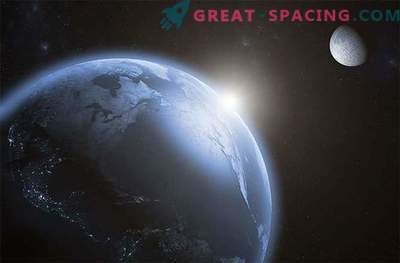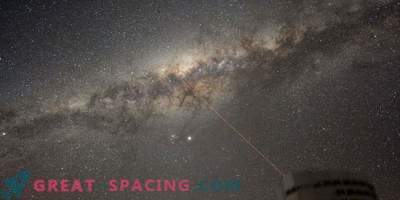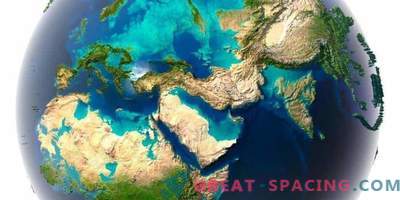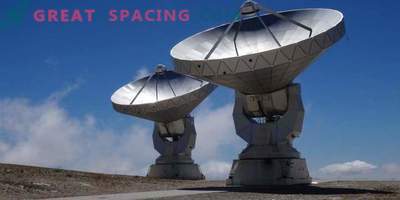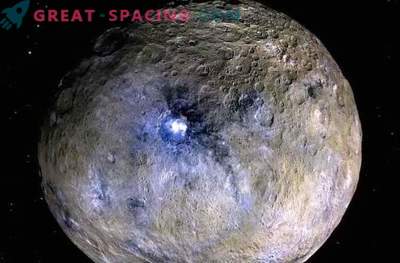
Thousands of planets of star systems that are outside the Earth, make it possible to believe that some of them have all the conditions for life. And if alien life exists, then scientists are not yet ready to say exactly how aliens may look. But they are ready to provide presumptive data regarding the weight category of aliens. According to one of the cosmologists, the approximate weight of one such alien can be about 700 pounds, which equals 314 kg.
Fergus Simpson, a practitioner at a university in Barcelona, presented his statistical research data on the Arxiv website. His discovery is based on the Bayes theorem and is confirmed by the mathematical-statistical Bayesian method. The purpose of this study was to assess the probability of an event, which may vary depending on another event that occurred statistically associated with it.
Considering Simpson’s mathematical calculations, some scientists were able to conclude that some of his assumptions were wrong. Simpson included in his calculations 50 million aliens who most likely inhabit other planets. He argued that any alien would most likely be a stranger from densely populated civilizations. The distribution of the population of the planets can be carried out on a bell-shaped analogy, which means that the number of planets with an average population is much higher than the number of galaxies with a high or vice versa low percentage of people.
As an analogy, we can consider the population on Earth. If you choose one person, then there are more chances that this will be a resident of China (1 out of 5 cases) and less likely that a resident of New Zealand will be elected (1 out of 1600 cases). However, there are many more medium-sized countries in the world that are larger than New Zealand, but smaller than China. And if one chooses a state at random, then it is more likely that a random choice will fall, for example, to Mozambique or Italy, than to such large-scale countries as China, Russia or the United States. The same theory can be applied to aliens. If we assume that based on the population, the Earth occupies a position in the wide part of the bell-shaped structure, we can conclude that there are about 50 million individuals living on an average galaxy. Such calculations were made by Simpson.
Thus, the study of extraordinary earthly life can contribute to the search for extraterrestrial life forms. Using such an argument, Simpson wrote that the size of the planet where there is extraterrestrial life is likely to be smaller in size than the Earth. In his theory, he also stated that about 50% of the diameter of the Earth falls on the lower part of the "bell". After all, if this were not the case, then air and water would not be saved on the planet. For example, Mars occupies about 53% of the size of our planet.
Again, according to Simpson, there is a high probability that every alien is from a large planet with a high population density. But on the whole, the chance of an alien coming out of a small galaxy is extremely high, as there are much more medium-sized planets than large ones. Simpson also summarized that 95% of the planets are 1.4 times larger or smaller than Earth.
The final part of the Simpson study was aimed at studying the dimensions of other life forms. As for the animals of planet Earth, then the calculations take into account the known relationship between the size of a representative of a particular species and their number. Thus, the smaller the representative of the genus, the more individuals of this species have a chance for survival. For example, an alien arriving on our planet would be more likely to see a mosquito than a blue whale.
The relationship between the number of aliens and their size can, according to probability theory, be represented as a curve line. According to forecasts, the average weight of an alien can reach 692 feet, which is 314 kilograms, approximately as much as an elk or a bear. On average, half the individuals from other planets will weigh more than this indicator, and the second half - less. This may seem contradictory, but more individuals must live in the number of small planets, but their number will be insignificant compared to the 7 billion people living on Earth.
Extraterrestrial life could have occurred in uninhabitable zones. The new study suggests that it would be possible to expand the number of planets like Earth exoplanets.
But some scientists are very cautious about such mathematical predictions. According to Michael Kopp, a professor of theoretical biology and evolution of the Marseille University in France, said that he does not believe such statistics. In his opinion, it is not entirely clear whether people are distinguished from all intelligent individuals of the universe. It is also quite possible that people on Earth can be an analogy of the median in all civilization. In other words, in the great scheme of the universe, the Earth, in terms of population, is more similar to Canada than to China or India.
The claim that most galaxies have a population of less than 50 million people is based on the theory that the size of a civilization depends on the size of its individuals. But according to Cop, scientists have no reason to think so.
The argument that the number of intelligent beings in the universe tends to grow would be less controversial. Consequently, the division of aliens into species according to their dimensional indicators seems reasonable and consistent. But again, according to Kopp, it is not necessary that the Simpson curve proposed by the world community regarding the size of the intelligent individuals of the planet is correct.
Seth Shostak, a research associate at the SETI Institute, said that it’s unlikely that Simpson’s theory about the size of an alien’s body could be true. According to Shostak, large creatures are likely to live in water. At the same time, it would be possible to use smart whales as extraterrestrial intelligence, equipping them with radio telescopes and lasers. But such equipment cannot be used under water, Shostak noted. Scientist Shostak also touched upon the problem of the development of intelligence in the Universe. It is known that both animals and people have become smarter because of the need to find food. A large animal, due to its size, does not have any difficulties with food prey, which works against the development of the brain, and therefore the intellect.
Nevertheless, the data of research by Simpson and other scientists provide an opportunity to reflect on the existence of extraterrestrial life. Such research should be encouraged and encouraged. So says Shostak.


